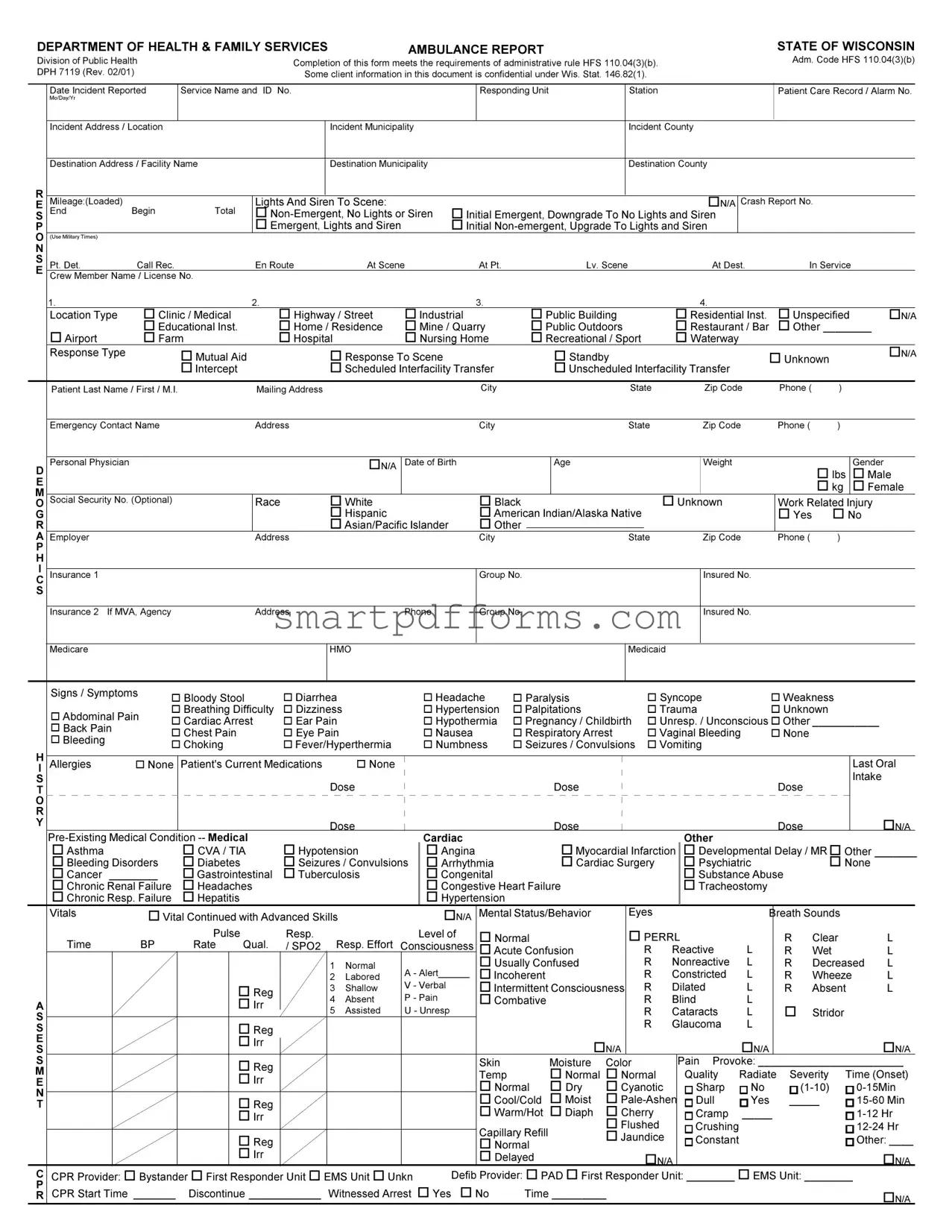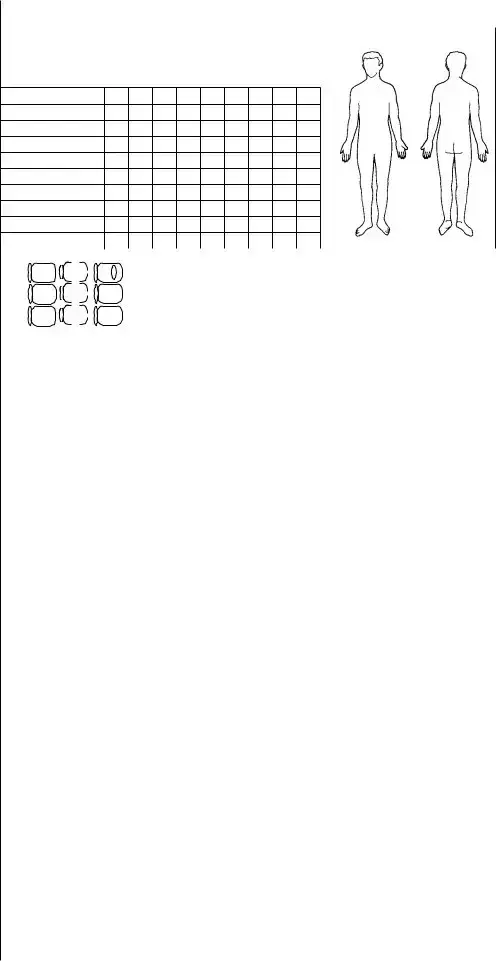In the earnest endeavor to streamline emergency medical services and bolster patient care coordination, the Ambulance Report Form, as endorsed by the Department of Health & Family Services in the State of Wisconsin, emerges as a pivotal document stirring the dimensions of pre-hospital medical records. Serving the directives stipulated under administrative rule HFS 110.04(3)(b), this comprehensive form embarks on capturing a substantial variety of details, starting from the incident's nuts and bolts – including the date, location, responding unit particulars, patient's demographic and medical history – to the nuanced clinical evaluations and the administered pre-hospital emergency care interventions. The format also thoughtfully incorporates sections addressing the patient's insurance information, medical alerts like allergies and pre-existing conditions, as well as meticulously tracking the patient's journey from the incident scene to the ultimate healthcare destination, outlining the urgency and nature of the response throughout. Privacy considerations are deftly handled, acknowledging the sensitive nature of client information under Wis. Stat. 146.82(1), thus ensuring a balanced approach between comprehensive record-keeping and respect for patient confidentiality.


